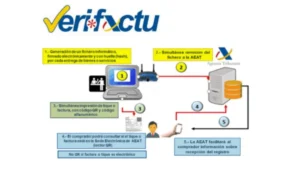Ecommerce and marketplaces without brand erosion with Odoo
Discover how Odoo helps you grow in e-commerce and marketplaces without losing margin or brand identity.

The CMO dilemma: growing without losing control
Ecommerce managers face an obvious dilemma: how to increase market share on marketplaces without harming the direct channel. Signs such as loss of margin, a drop in Average Order Value (AOV), or an increase in returns are symptoms of brand erosion.
In this context, having a specialized Odoo consultant is key to defining processes that protect pricing, assortment, and margins. By centralizing catalog, stock, and returns in the ERP with CRM functions, CMOs can govern with data rather than impulsive decisions, establishing a solid operational control framework.
Multi-channel synchronization: master catalog and stock in real time
The most efficient operating model begins with defining a master catalog in Odoo. This catalog allows for automatic synchronization of descriptions, images, and attributes to PrestaShop, Amazon, or Miravia. The ERP acts as a single source of truth, avoiding inconsistencies between platforms.
Furthermore, real-time inventory visibility is crucial. A synchronization error can lead to stockouts or duplicate sales, with a direct impact on OTIF (On Time In Full) and customer satisfaction KPIs. Native and marketplace-specific connectors allow inventory to flow seamlessly, and each order to be automatically routed to the most appropriate fulfillment center.
Return management with controlled margin impact
Brand erosion doesn’t just stem from pricing. Returns (RMA) flow must be managed precisely, as its hidden cost can drastically reduce profitability.
Odoo allows you to configure different return rules per channel, allowing Amazon or Miravia to operate under clear SLA policies, while the direct channel can promote more flexible returns with upsell or cross-sell opportunities. The ERP records the financial impact of each return, providing key metrics to determine which SKUs are worth continuing in a marketplace and which should be reserved for the D2C channel.
Dynamic pricing and Buy Box control
One of the most sensitive issues is pricing. Selling on marketplaces without a defined floor price can trigger a price war that erodes brand value.
Odoo allows you to manage channel-differentiated price lists, discount rules, Buy Box alerts, and connections to external repricers under a centralized governance framework. This capability not only guarantees margin protection but also ensures consistency in your brand positioning strategy.
In this sense, adopting a system like Odoo Spain makes it easier for companies to operate with clear pricing and margin rules, adapted to local market dynamics.
Channel mix decided SKU by SKU
Successful coexistence between your own channel and marketplaces isn’t achieved with general rules. Each SKU must be evaluated using objective criteria: real margin, elasticity, brand sensitivity, return rate, and turnover.
The ERP allows you to build a decision matrix that determines whether a product should be promoted on Amazon due to its high turnover, reserved for D2C due to its brand value, or distributed in a segmented manner. This prevents cannibalization and strengthens the role of each channel within the strategic mix.
Brand governance and channel differentiation
Brand protection isn’t limited to price. Content must be tailored to each channel, from more detailed descriptions in PrestaShop to optimized Buy Box listings on Amazon.
Odoo offers tools for managing exclusive bundles in the direct channel, MAP (Minimum Advertised Price) policies, and customized cross-selling and upselling strategies. This reinforces the perception of value and allows the channel to maintain a distinctive role in the face of aggressive marketplace standardization.
The VERI*FACTU challenge in 2026 and the adaptation of Odoo
Starting January 1, 2026, all Spanish companies must adapt to the VERI*FACTU system, which will require complete invoicing records, QR verification, and full traceability. Self-employed workers will be added in July of the same year.
Odoo is already working on adapting its invoicing modules to ensure compatibility with this regulatory framework. This will allow companies to integrate multi-channel orchestration and tax compliance into a single system, reducing the risk of penalties and ensuring data integrity in real time.
KPIs that guide the strategy
The key to sustainable growth in marketplaces without brand erosion lies in measuring the right metrics. Some of the most relevant are:
*Margin per channel.
*Share marketplace vs. D2C.
*Buy Box Percentage.
*Price Index versus the competition.
*Average Order Value (AOV).
*Return rate (RMA) and resell rate.
*OTIF level and stock-outs.
*Complete cycle from order to payment.
Continuous monitoring of these KPIs in Odoo allows ecommerce managers to make data-driven decisions, allocate inventory accurately, and anticipate problems before they impact margins.
The path to profitable e-commerce in the era of marketplaces involves abandoning intuition and embracing data governance. The SKU decision matrix is the tool that turns Odoo into the true orchestrator of the multi-channel mix.
Source: www.marketingdirecto.com







